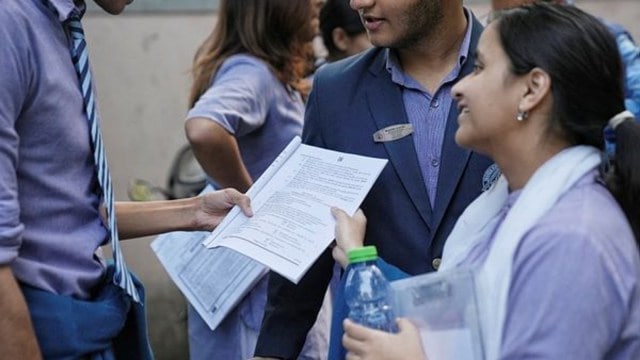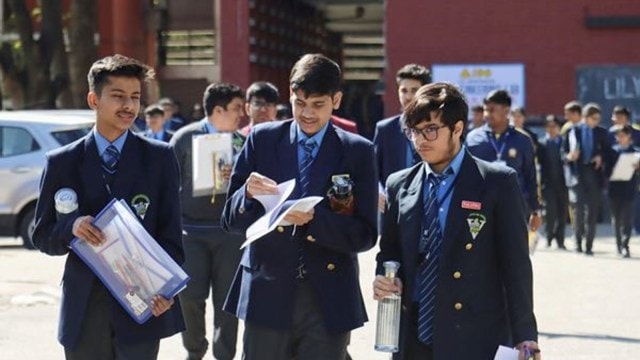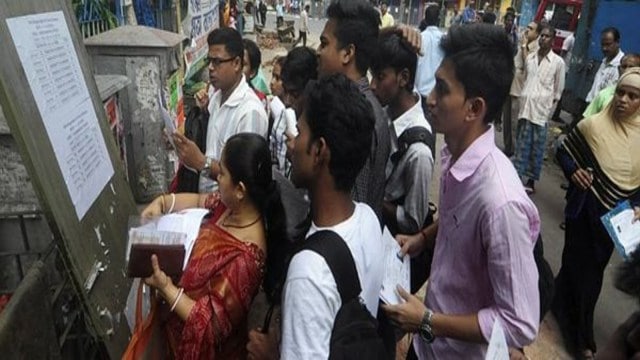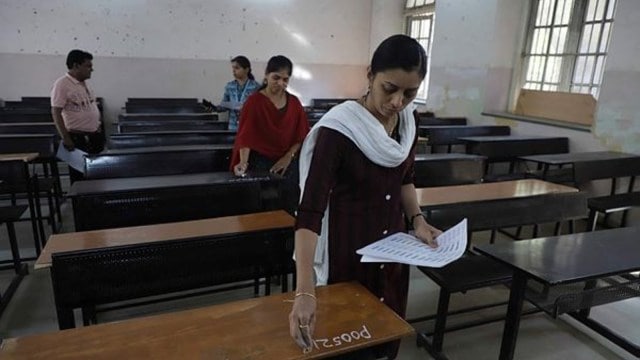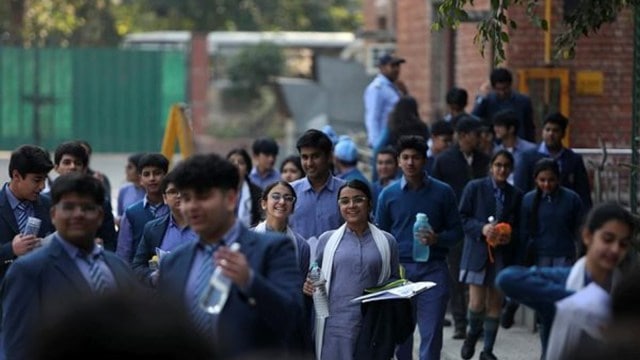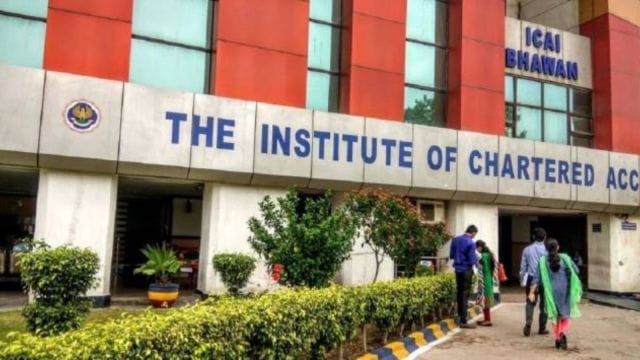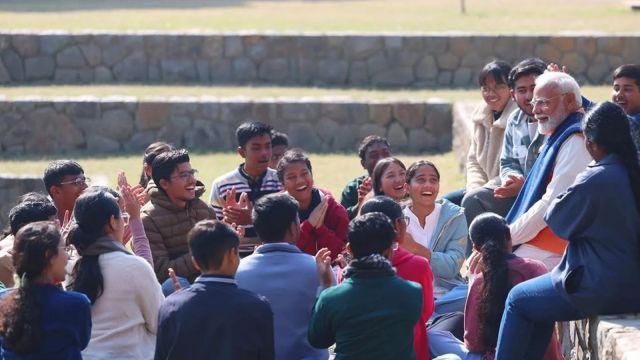
UPSC Key—31st January, 2024: Budget session of the Parliament, Corruption Perceptions Index and Stingless beesPremium Story
Important topics and their relevance in UPSC CSE exam for January 31, 2024. If you missed the January 30, 2024 UPSC CSE exam key from the Indian Express, read it here
FRONT PAGE
Budget Session begins today, suspension of 14 Opposition MPs revoked
Syllabus:
Preliminary Examination: Indian Polity and Governance
Main Examination:
• General Studies II: Parliament and State legislatures—structure, functioning, conduct of business, powers & privileges and issues arising out of these
• General Studies III: Government Budgeting
Key Points to Ponder:
• What’s the ongoing story-On the eve of Parliament’s Budget Session, the suspension of 14 Opposition MPs — 11 from Rajya Sabha and three from Lok Sabha — was revoked Tuesday to enable them to attend the customary President’s address to both Houses of Parliament on Wednesday.
• What is ‘session’ of the Parliament?
• Who summons each House of Parliament to meet?
• There are usually three parliament sessions in a year, what are they?
• For Your Information-The period spanning between the prorogation of a House and its reassembly in a new session is called ‘recess’.
• What happens in the Budget Session of the parliament?
• ‘A record 146 Opposition MPs, from both the Lok Sabha and Rajya Sabha, were suspended during the Winter Session for disrupting proceedings’-Why?
• Why were the MPs suspended?
• Why do MPs disrupt Parliament?
• What has Parliament done to address these issues?
• Can courts intervene in a matter of suspension of MPs?
• What is the reason for suspending an MP?
• How long can MPs be suspended for?
• Is suspending MPs common practice?
• For Your Information-The session, the last before the Lok Sabha elections, will be a short one. It begins on Wednesday with President Droupadi Murmu’s address to the joint sitting of both Houses – her first in the new Parliament building — and ends on February 9. Finance Minister Nirmala Sitharaman will table the interim Budget on Thursday, after which both the Houses will take up discussions on the motion of thanks to the President’s address.
• What is interim budget?
• What is the difference between interim budget and Union Budget?
• But why interim budget this year?
• Do You Know-A vote on account, also known as interim Budget, essentially means that the government seeks the approval of Parliament for meeting expenditure for the first four months of the fiscal year (April-March) — paying salaries, ongoing programmes in various sectors etc — with no changes in the taxation structure, until a new government takes over and presents a full Budget that is revised for the full fiscal. Over the years, some governments have made policy announcements or tweaked tax rates in the vote on account. Such practices are now being recalled, amid indications that the government may present more than a vote on account on February 1.
The reasoning is that there is little time to get approvals from Parliament for various grants to ministries and departments, and to debate these as well as any provisions for changes in taxation. More importantly, the reasoning is that it would be the prerogative of the new government to signal its policy direction, which is often reflected in the Budget. So, starting 1948, when Finance Minister R K Shanmukham Chetty presented a vote on account and followed it up with Independent India’s first regular budget, most governments have followed this convention.
Many Finance Ministers, including two who went on to become President, R Venkataraman and Pranab Mukherjee, noted in their interim Budgets how constitutional propriety calls for the new government to formulate the tax and expenditure policies for the next fiscal year. But a distinction is sought to be made between a government that is expected to continue in office and a scenario where polls are to follow.
Other Important Articles Covering the same topic:
????Explained: What is interim Budget?
GOVT & POLITICS
Corruption perceptions index: India at 93 among 180 countries
Syllabus:
Preliminary Examination: Indian Polity and Governance-Constitution, Political System, Panchayati Raj, Public Policy, Rights Issues, etc.
Mains Examination: General Studies IV: Probity in Governance: Challenges of corruption.
Key Points to Ponder:
• What’s the ongoing story-INDIA ranked 93 out of 180 countries on the corruption perceptions index (CPI) for 2023, according to the latest report released by Transparency International. The index, which lists countries by their perceived levels of public sector corruption, ranked Denmark at the top, followed by Finland, New Zealand and Norway.
• What is Bribery and Corruption?
• What are the types of corruption?
• What are the reasons for corruption in India?
• Implication of corruption-Know in detail
• ‘Transparency International’-Have you heard this organisation’s name?
• Who publishes Corruption Perceptions Index (CPI)?
• For Your Information-The index uses a scale of 0 to 100, where 0 is highly corrupt and 100 is very clean. In 2023, India’s overall score was 39 while in 2022, it was 40. India’s rank in 2022 was 85. In the Asian region, Singapore ranked at the top, scoring 83 and occupying the fifth slot.
“India (39) shows score fluctuations small enough that no firm conclusions can be drawn on any significant change. However, ahead of the elections, India sees further narrowing of civic space, including through the passage of a (telecommunication) Bill that could be a ‘grave threat’ to fundamental rights,” the report said.
While western Europe and the European Union remained the top-scoring regions, its regional average score dropped to 65 this year, as checks and balances weakened and political integrity eroded, the report said. In South Asia, both Pakistan (rank 133) and Sri Lanka (rank 115) are grappling with their respective debt burdens and ensuing political instability, it said. “However, the two countries have strong judicial oversight, which is helping to keep the government in check. The Supreme Court of Pakistan strengthened citizens’ right to information by expanding this right under Article 19A of its Constitution to previously restricted institutions,” it said.
Noting that China (rank 76) has made headlines with its aggressive anti-corruption crackdown by punishing more than 3.7 million public officials for graft over the last decade, the report said the country’s heavy reliance on punishment rather than institutional checks on power raises doubts over the long-term effectiveness of such anti-corruption measures. The bottom of the index included Myanmar (162), Afghanistan (162) and North Korea (172). At rank 180 was Somalia with the lowest score of 11.
• What are some Anti-corruption initiatives taken by Government of India?
• What are Lokpal and Lokayukta?
• The Lokpal and Lokayuktas (Amendment) Bill, 2016-Know key highlights
• Structure of Lokpal-Know key details
• Know the Jurisdiction and Powers of Lokpal
Other Important Articles Covering the same topic:
????Transparency International’s Corruption Perception Index falls short of nudging govts to undertake reforms
EXPRESS NETWORK
Mosque panel on ASI report: Will submit objections after getting historians’ views
Syllabus:
Preliminary Examination: Current events of national and international importance and History of India
Mains Examination: General Studies II: Structure, organization and functioning of the Executive and the Judiciary
Key Points to Ponder:
• What’s the ongoing story-Reacting sharply to the Archaeological Survey of India (ASI) report on the Gyanvapi mosque complex, the Anjuman Intezamia Masajid committee, which runs the mosque in Varanasi, has said they are studying the report and would submit objections to it in court after getting opinions from historians.
• “The Archaeological Survey of India (ASI) submitted its report on a scientific survey it had undertaken at the Gyanvapi mosque complex”-What is in the report?
• What are the historical claims with respect to Gyanvapi mosque?
• What exactly Allahabad High Court (HC) said?
• Gyanvapi Mosque-Know the Style and Architecture
• Kashi Vishwanath Temple Architecture-Know in detail
• How did the Supreme Court enter the picture?
• What Supreme Court said in this matter?
• What are the issues involved in this case?
• For Your Information-In July last year, the Varanasi district court directed the ASI to primarily find out whether the mosque was “constructed over a pre-existing structure of a Hindu temple”, in response to a plea filed by five Hindu women – referred to as ‘Rakhi Singh and others’.
For this, the agency was asked to conduct a detailed scientific investigation through a Ground Penetrating Radar (GPR) survey, excavation, dating methods and other modern techniques. Significantly, they were also tasked with ascertaining the age and nature of the construction of the Western wall, which is widely believed to be predating the mosque.
The agency was also asked to prepare a list of all the artefacts found in the building, specifying their contents. While doing all this, the ASI was instructed to ensure that no damage was done to the structure. In that sense, the ASI insists the survey wasn’t their initiative, nor were the questions and aims set out by them, and they were merely carrying out the court orders.
In view of the court’s directions that the structure should remain unharmed, the ASI survey mostly entailed line drawings, documentation, GPR imaging and written notes, besides photography and videography. The ASI team used several non-invasive scientific techniques to ascertain the age of the mosque complex. In the case of objects discovered on the premises, the team determined their age archaeologically – dating them by studying stylistic comparisons. The team also physically inspected all nooks and corners of the complex, studying all the aspects archaeologically and photographed them to create a detailed map. Even as the district court had permitted excavation (without harming the structure), the ASI team refrained from any sort of excavation in the complex or in the adjoining areas owing to the sensitivity of the matter. However, extensive cleaning of the debris was conducted, which consisted of using regular garden tools like shovels to clear sludge from the compound and its basement cellars.
The ASI survey – which went on for about three months – excluded the areas sealed by the Supreme Court in May last year, popularly known as the wazukhana or ablution area. Hindu petitioners in the Kashi Viswanath-Gyanvapi mosque dispute have now moved the Supreme Court seeking a vacation of stay, and asked the ASI to conduct a scientific investigation of the object recovered from the water tank in the mosque. They also urged the SC to direct the ASI to survey the sealed parts of the complex. While the Hindus claimed that the object found there is a Shivling, the Muslim side contends it is a fountain. Sources say the ASI will conduct a similar survey of the tank as and when the court orders it.
As per ASI sources, their report is based on extensive scientific techniques and can stand the scrutiny of the court, in case arguments and counter-arguments based on their report ensue. Meanwhile, the All India Muslim Personal Law Board has refuted the report saying that it is not “conclusive evidence” in this contentious case.
• What is Kashi Vishwanath Temple Act, 1983?
• The court cited Section 4 (9) of the Kashi Vishwanath Temple Act, 1983, defines “Temple”-What is Temple?
• Is right to worship a fundamental right?
• What is the meaning of freedom of worship?
• Right to Freedom of Religion from Articles 25 to 28-Know in detail
• Is litigation the best method to resolve disputes between faith-based communities?
Other Important Articles Covering the same topic:
????The Places of Worship Act
????Court order on Kashi Vishwanath Temple-Gyanvapi Mosque site in Varanasi: history and context
Centre: 718 snow leopards in India; two-thirds of them in Ladakh
Syllabus:
Preliminary Examination: General issues on Environmental ecology, Bio-diversity and Climate Change – that do not require subject specialization.
Mains Examination: General Studies III: Conservation, environmental pollution and degradation, environmental impact assessment.
Key Points to Ponder:
• What’s the ongoing story- India has an estimated 718 snow leopards with Ladakh reporting the maximum number (477) of these cats, the Union Environment Ministry said on Tuesday.
• Where are snow leopards found?
• Do You Know-Snow leopards are native to the alpine regions of Central Asia. It is because of their thick fur that they are able to survive harsh cold climates. Even so, during the winter months, they are likely to descend to lower elevations. While the feline is a carnivore, no known human casualty has been recorded till now. Snow leopards mostly prey on blue sheep and mountain ibex and their smaller prey include hares, game birds and marmots.
A snow leopard can kill prey that is up to three times its own weight. In India, snow leopards mainly inhabit the higher Himalayan and trans-Himalayan landscape at an altitude between 3,000-5,400 metres. These ranges span a combined area of about 1,00,000 sq km across Jammu and Kashmir, Ladakh, Himachal Pradesh, Uttarakhand, Sikkim, and Arunachal Pradesh. This area contributes to about five per cent of the global snow leopard range.
• What is the snow leopard project in India?
• Where was the project snow leopard launched in India?
• Mark on Map-Presence Snow leopard in India (States)
• What is Global Snow Leopard & Ecosystem Protection Program?
• Is India a part of Global Snow Leopard & Ecosystem Protection Program?
• What is the IUCN status of Snow Leopard?
• For Your Information-Dubbed the ghost of the mountain, the snow leopard’s first record in captivity dates back to 1891 when the London zoo acquired one from Bhutan. But it was not until the 1950s that captive born cubs became breeders themselves. After that breakthrough in the Copenhagen zoo, snow leopards have bred relatively well in captivity. By 1991, 98% of all snow leopards in zoos were captive bred. Big cats are known to proliferate under unusual circumstances. The US alone has over 10,000 mostly inbred captive tigers — that’s twice the species’ count in the wild. South Africa banned captive lion breeding in 2021 but does not know how to deal with more than 6,000 captive lions living on private ranches.
Yet, making big cats breed can be frustrating — even fraught with danger. Jittery male clouded leopards have killed the females on so many occasions that some animal fertility experts consider this shy species a bigger challenge than even hard-to-breed red pandas. However, clouded leopards are far from an exception. In 2019, London zoo put two tigers together after they spent 10 days in adjacent cages and showed encouraging signs of familiarity. Within minutes, a fight broke out and the 10-year-old Sumatran female was killed. More recently, a coalition of two male cheetahs was given access to a female inside an enclosure in Kuno national park last May in the hope that they might mate. The interaction turned violent and Dakhsha, the female from South Africa, died.
In the social structure of other cats such as tigers or leopards, a large male territory encompasses multiple female territories to ensure female fidelity. It is the opposite among cheetahs: females roam multiple male territories to pair with multiple males and guard against further genetic constriction of the species. In captivity, the female cheetah is ‘turned off’ by loss of mating choice. There is no authenticated record of cheetahs breeding in captivity until 1956, when a cub was born in Philadelphia zoo. Even today, only one in five captive cheetahs, male or female, breed. Female cheetahs come to oestrus throughout the year but show few outward signs unless they are interested in mating. Misreading oestrus and giving male cheetahs access to a female not in heat can lead to serious injuries.
The solution is to mimic the wild where the sexes rarely meet when not mating and typically get to know the other by smelling. A successful zoo model connects isolated male and female holding areas with a long pathway — dubbed lover’s lane — and takes males to female enclosures when it is time to sniff and tell. To test if a female is ready, she is taken away and a male is allowed down lover’s lane to sniff her now-empty yard. The male can tell from the smell if she is in heat. If he tries to attract her with a typical barking sound, she is released to join him. If he does not bark, he goes back down lover’s lane. Even when they oblige, few cheetah matings result in conception. A paper published in Science in 1983 found that all cheetahs are virtually twins or clones with very little genetic variation. Their sperm has low density and very high (70%) deformity. Post-conception, loss of foetuses is common. Only 5% of cheetah cubs survive to adulthood.
At present, two Indian zoos in Mysore and Jamnagar house 10 cheetahs. Neither has reported any cubs. Under the Cheetah Project launched in 2022 to establish the species in the wild, three cubs were born recently in captivity inside an enclosure in Kuno.
George Schaller, the world’s preeminent field biologist, described a snow leopard spotting in the Himalayas: “Wisps of clouds swirled around, transforming her into a ghost creature, part myth and part reality… Balanced precariously on a ledge and bitterly cold, I too stayed, unwilling to disrupt the moment… Then the snow fell more thickly, and dreamlike, the cat slipped away as if she had never been.” (Stones of Silence, 1980) No zoo can recreate that magic. But the success of Darjeeling zoo is a significant contribution to the global captive stock which is considered an insurance for the snow leopard’s dwindling numbers — anything between 4000 to 7000 — in the wild. Today, 160 zoos across the world house over 600 snow leopards
Other Important Articles Covering the same topic:
????Explained: Why India and world are counting snow leopards, and how
THE EDITORIAL PAGE
An opening for diplomacy
Syllabus:
Preliminary Examination: Current events of national and international importance.
Main Examination: General Studies II: Important International institutions, agencies and fora- their structure, mandate.
Key Points to Ponder:
• What’s the ongoing story-Upendra Baxi writes: Is it not myopic to say that the ICJ has no power to promulgate provisional measures simply because on merits it may, after a long time, disallow a case? The potential of creative diplomacy is never to be undermined
• Why Israel faced accusations at the World Court?
• Who brought the case at the International Court of Justice in the Hague and Why?
• What is the case before the World Court?
• What is UN’s 1948 Genocide Convention?
• What were South Africa’ arguments?
• How Israel responded?
• Does the International Court of Justice have the power to prosecute Israel?
• Does Israel recognise International Court of Justice jurisdiction?
• What is International Court of Justice?
• International Criminal Court and International Court of Justice-Compare and Contrast
• “Unsurprisingly, the International Court of Justice (ICJ) orders and opinions on South Africa’s case against Israel have met with diverse reactions”-Discuss
• “The learned judge’s dissent has been applauded by many. But is it not myopic to say that the ICJ has no power to promulgate provisional measures simply because on merits it may, after a long time, disallow a case?”-Comment
Other Important Articles Covering the same topic:
????Everyday Global: What is the International Court of Justice
ECONOMY
Asian fuel exports to Europe hit, Russian oil cargoes sail strong
Syllabus:
Preliminary Examination: Current events of national and international importance.
Mains Examination: General Studies II: Effect of policies and politics of developed and developing countries on India’s interests, Indian diaspora.
Key Points to Ponder:
• What’s the ongoing story- Even as west-to-east crude oil flows — mainly Russian oil headed to India and China — via the Suez Canal have not been majorly impacted by the Red Sea troubles, refined petroleum product exports to Europe through the crucial trade route have seen disruptions, according to commodity market analytics firm Kpler.
• The trend is significant for India-Why?
• Map Work-Bab el-Mandeb strait, Red Sea, Suez Canal, Mediterranean Sea and Arab Peninsula
• Why a number of cargo ships have come under attack from the Iran-backed Houthi rebels of Yemen?
• Why is the Red Sea significant and why are ships being attacked there?
• Could the Red Sea attacks impact the global economy?
• “Red Sea shipping crisis could impact India’s exports to Europe”-Discuss
• “The ongoing attacks on shipping vessels by Houthi militants in the Red Sea have not impacted the flow of crude oil to India but freight has gone up due to rerouting”-Discuss
• How escalating Red Sea crisis poses risk for India?
Other Important Articles Covering the same topic:
????Crisis can impact India as 80% of exports to Europe takes place via Red Sea: Official
THE WORLD
To protect Amazon, conservators try to save pollinator: Stingless bees
Syllabus:
Preliminary Examination: General issues on Environmental ecology, Bio-diversity and Climate Change – that do not require subject specialization.
Main Examination: General Studies III: Conservation, environmental pollution and degradation, environmental impact assessment.
Key Points to Ponder:
• What’s the ongoing story- As a child, Heriberto Vela, an Indigenous resident of Loreto, Peru, watched his father pull nests of wild stingless bees from trees in the Amazon forest. Together, the two then extracted honey from the nests to help cure colds and other ailments.
• Stingless bees-What you know about them?
• Stingless bees- Know their Geographical distribution
• Stingless bees vs invasive honey bees-Compare
• Stingless bees as a pollinator-Discuss
• Do You Know-The Amazon is home to hundreds of species of stingless bee, but as deforestation converts the tropical landscape into farms and ranches, these and other native pollinators are in danger of disappearing. Pesticides, climate change and competition with the honey bee, which is better adapted to agricultural areas than the stingless bee, introduces more strain. The Amazon is one of the most biodiverse regions in the world. But widespread deforestation threatens the protection of Indigenous communities as well as the animals and plants that live there, and it reduces the habitat’s function as a major carbon sink amid Earth’s growing climate crisis.
• What do you know about the cognitive abilities of bees?
• Bees and “waggle dance”-Connect the dots
• Why do bees matter?
Other Important Articles Covering the same topic:
????Explained: Why Australia has killed millions of bees to save its honey industry
????Explained: Inside the minds of bees, and what we can learn from their intelligence
Previous year UPSC Prelims question covering same theme: ????Which of the following organisms perform waggle dance for others of their kin to indicate the direction and the distance to a source of their food? (UPSC Prelims, 2023) a) Butterflies b) Dragonflies c) Honey Bees d) Wasps ????Consider the following kinds of organisms: (UPSC Prelims, 2012) 1. Bat 2. Bee 3. Bird Which of the above is/are pollinating agent/agents? (a) 1 and 2 only (b) 2 only (c) 1 and 3 only (d) 1, 2 and 3
EXPLAINED
Issues with EVs, and possible hybrid solution
Syllabus:
Preliminary Examination: Economic and Social Development
Mains Examination: General Studies III: Infrastructure: Energy, Ports, Roads, Airports, Railways etc.
Key Points to Ponder:
• What’s the ongoing story- India needs to “embrace” hybrid vehicles over the next 5-10 years on the way to full electrification, HSBC Research has said. Such vehicles are the more practical medium-term solution for the country’s decarbonisation efforts and, more importantly, less polluting, according to the note.
• What do you understand by ‘Electric Vehicle’? How it is different?
• What are the types of electric vehicles?
• What are the issues in BEV push?
• Know these terms-Battery Electric Vehicle, Hybrid Vehicle, Plug-In Hybrid Vehicle and Fuel Cell Vehicle
• Electric Vehicles Scope in India-Know in detail
• Electric Vehicles in daily use-will be successful in Long run?
• Why Government of India is Pushing for adaptation of Electric Vehicles?
• Electric Vehicles-What are the issues and Challenges especially in India’s Scenario?
• “Hybrid vehicles are a good medium-term solution”-Discuss
• How is the overall global push for BEVs faring?
• Transition to electric mobility- pros and cons
• Various Government measures such as remodelled Faster Adoption and Manufacturing of Electric Vehicles (FAME II) scheme for the consumer side to production-linked incentive (PLI) scheme for Advanced Chemistry Cell (ACC)
Other Important Articles Covering the same topic:
????India’s electric vehicle push will lead to brighter, greener future
????The problem with BEVs
Test tube rhinos: why rebuilding doomed species is a desperate race against time
Syllabus:
Preliminary Examination: General issues on Environmental ecology, Bio-diversity and Climate Change – that do not require subject specialization.
Main Examination: General Studies III: Conservation, environmental pollution and degradation, environmental impact assessment.
Key Points to Ponder:
• What’s the ongoing story- The death of the last male in 2018 made the extinction of the northern white rhino an inevitability. But already in 2015, a group of 20 scientists from five continents had launched an audacious and expensive project to rebuild the subspecies through in vitro fertilisation (IVF). Last week, the scientists announced the first-ever rhino pregnancy achieved by transferring a lab-made rhino embryo into a surrogate mother. It took 13 attempts for the breakthrough with a southern white rhino, a closely-related subspecies that branched away from the northern whites about a million years ago. The international consortium of scientists, named BioRescue, is confident that the success can be replicated with 30 embryos of the northern white stored in liquid nitrogen. However, rebuilding a species is easier said than done.
• Northern white rhinos-know about them
• How many northern white rhinos are left?
• Why this process is the challenge?
• Issue of genetic viability-Discuss
• Is it worth the money?
• Do You Know-One rhino is poached every 16 hours on average in Africa. While the southern whites form the largest surviving rhino species, there are fewer than 7,000 black rhinos in Africa, and only 4,000 one-horned rhinos in Asia. Populations of the other two rhino species — the Javan and the Sumatran — are down to fewer than 100 each.
Other Important Articles Covering the same topic:
????The world’s last two northern white rhinos
For any queries and feedback, contact priya.shukla@indianexpress.com The Indian Express UPSC Key is now on Telegram. Click here to join our channel and stay updated with the latest Updates.

 Posts
Posts Sign up as a Teacher
Sign up as a Teacher